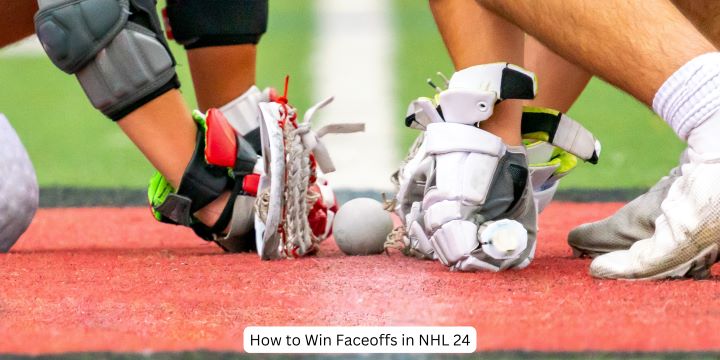Winning faceoffs in NHL 24 can be the difference between controlling the game and constantly chasing the puck. Mastering faceoffs not only gives you possession but also sets the pace and flow of the game. This guide will provide you with all the strategies, tips, and techniques you need to dominate the faceoff circle.
Understanding the Importance of Faceoffs
Faceoffs occur numerous times throughout a game—after goals, penalties, offsides, and stoppages. Each one is an opportunity to gain control and create scoring chances. Consistently winning faceoffs can:
- Increase puck possession
- Improve offensive opportunities
- Enhance defensive setups
- Dictate the game’s tempo
Know Your Player’s Attributes
Before diving into techniques, it’s crucial to understand your player’s faceoff attributes. Players with higher faceoff ratings have an advantage. Here’s what to look for:
- Faceoff Rating: Indicates the player’s skill in faceoff situations.
- Handedness: Left or right-handed players may have advantages in certain faceoff circles.
- Strength and Stick Checking: Higher ratings can help in tie-up situations.
Mastering Faceoff Techniques
1. Timing Is Everything
- Watch the Referee’s Hand: Anticipate the puck drop by focusing on the referee’s hand movement.
- Don’t Anticipate Too Early: Moving too soon can result in a faceoff violation.
- Practice the Timing: Use practice modes to get a feel for the timing window.
2. Choose the Right Faceoff Type
There are several faceoff techniques you can use, each mapped to your controller:
- Stick Lift (Triangle/Y Button): Effective against opponents who frequently use forehand or backhand grips.
- Tie-Up (X/A Button): Useful for neutralizing the opponent’s stick, allowing your wingers to grab the puck.
- Forehand/Backhand Wins (Right Stick Movements):
- Forehand Pull (Right Stick Left/Right depending on handedness): Good for quick wins to your defensemen.
- Backhand Pull (Opposite direction of forehand): Similar to forehand but from the backhand side.
- Push Forward (Flick Right Stick Forward): Surprise the opponent by pushing the puck forward and creating an immediate offensive chance.
3. Read Your Opponent
- Observe Patterns: Pay attention to your opponent’s preferred techniques.
- Counter Strategies:
- If they frequently use stick lifts, opt for tie-ups.
- If they use tie-ups, use a quick stick movement to win the puck back.
- Mix It Up: Keep your opponent guessing by varying your techniques.
Utilize Practice Modes
- Faceoff Training: Spend time in practice modes specifically designed for faceoffs.
- Adjust Difficulty Levels: Start with easier levels and gradually increase the difficulty.
- Practice Against Real Players: Online practice can help you adapt to different play styles.
Adjust In-Game Strategies
- Line Management: Use centers with higher faceoff ratings during critical moments.
- Player Fatigue: Tired players have slower reaction times. Keep your players rested.
- In-Game Adjustments: If you’re losing faceoffs, consider changing your approach mid-game.
Controller Sensitivity and Settings
- Adjust Sensitivity: Find a controller sensitivity that suits your reaction time.
- Vibration Feedback: Enable controller vibration to get tactile feedback on timing.
Mental Preparation
- Stay Calm: Anxiety can affect your reaction time.
- Focus: Eliminate distractions during faceoffs.
- Confidence: Believe in your ability to win the draw.
Summary of Key Tips
- Understand Player Attributes: Use players with high faceoff ratings.
- Master Timing: Practice to perfect your puck drop timing.
- Vary Techniques: Use different faceoff methods to keep opponents off-balance.
- Read Opponents: Adapt your strategy based on their patterns.
- Practice Regularly: Utilize practice modes and online play to improve.
Conclusion
Winning faceoffs in NHL 24 requires a combination of skill, strategy, and practice. By understanding your player’s strengths, mastering various techniques, and continuously adapting to your opponents, you’ll gain a significant advantage on the ice. So hit the practice rink, refine your skills, and take control of the game one faceoff at a time.






